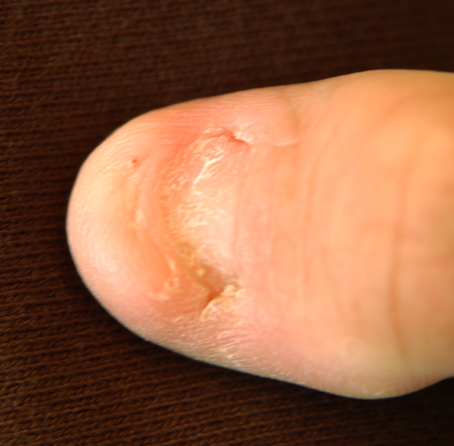Nail-Patella Syndrome

A rare hereditary patellar dysostosis characterized by nail hypoplasia or aplasia, aplastic or hypoplastic patellae, elbow dysplasia, and the presence of iliac horns as well as renal and ocular anomalies.
Epidemiology
The reported prevalence is 1/50,000; however, epidemiological studies are lacking.
Clinical description
Nail-patella syndrome (NPS) is a multisystemic disorder characterized by significant inter- and intrafamilial variability in clinical manifestations and severity of the disease. Cases can range from mild with no functional impact to severe leading to disability. The classical tetrad involves nails dysplasia, absent or hypoplastic patellae, presence of iliac horns, and elbow deformities. Adults can have a slight lower bone mineral density of the hip and spine (8 -20%) leading to a higher risk of fractures and scoliosis. Glaucoma and ocular hypertension have been described in NPS patients and may require early ophthalmological screening. Renal complications are reported in 30-60% of the cases. Other extraskeletal abnormalities described are loss of the normal skin creases over the distal interphalangeal joints and, neurological symptoms such as numbness, tingling and neuropathic pain.
Etiology
NPS is an autosomal-dominant disorder and the majority of the cases are caused by LMX1B mutations (9q33.3) leading to loss of function of the LMX1B protein. About 10% are caused by a de novo pathogenic variant.
Diagnostic methods
The diagnosis is based on clinical findings. Molecular test can identified the LMX1B gene mutations in around 95% of the cases, thus helping to confirm the clinical diagnosis or cases where clinical signs and symptoms are not clear.
Differential diagnosis
As patients with NPS may present a broad phenotypic spectrum, differential diagnosis may be necessary, as the association of systemic and musculoskeletal findings may also occur in other genetic syndromes including Coffin-Siris, Meier-Gorlin, Genitopatellar, RAPADILINO, DOORS, and coxopodopatellar syndrome.
Antenatal diagnosis
Prenatal diagnosis is possibile when there is a positive familiar history for the disorder. Some skeletal signs (ie, talipes equinovarus or large iliac horns) may be identified on fetal ultrasound examination in the third trimester of pregnancy. When the disease-causative variant is found in the affected individual of the family, prenatal testing for a pregnancy at increased risk and preimplantation genetic diagnosis are possible.
Genetic counseling
NPS is inherited in an autosomal dominant manner. Each child of an NPS affected individual has a 50% chance of inheriting the LMX1B pathogenic variant of the disease. The penetrance of the disease is complete, but the clinical expression is variable even in individuals of the same family. About 90% of NPS patients have an affected parent. In NPS, somatic and germline mosaicism has been reported in unaffected parents.
Management and treatment
The management and treatment is focused on the clinical manifestations, which may require a multidisciplinary team. Joint limitations or anatomical abnormalities may need surgical treatment. Early ocular and renal screening may be helpful and a medical follow up can be required if any alteration is identified. Pain management is important and physical and pharmacological options are available.
Prognosis
Patients with NPS live a normal lifespan. The renal pathology is a major determinant of the prognosis, as proteinuria, hypertension, and hematuria occur in 30 - 60% of the patients; 5 % progress to chronic renal failure.